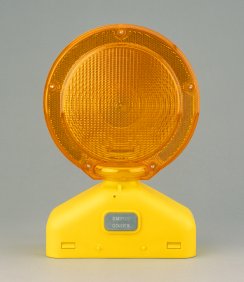Barricade Lights
Barricade lights are important equipment additions when it comes to increasing worker and driver safety. Barricade lights can be added to devices like barricades, barriers, drums, cones and panels, to ensure that product visibility and awareness is high. In poorly lit or hard to see areas, a barricade light can increase the life of your device, and make sure that its purpose is fulfilled. Some states require certain products to be used with a light. If you aren’t using barricade lights already, then you may want to consider finding the right type for you by understanding the following:
Minimum Requirements
Every state has their own regulatory traffic code, and within it are the minimum standards that must be met. If your state outlines the need for lighting on particular traffic safety devices, then it will likely outline the minimum requirements that the light has to meet. If your state does not outline any need for lights, consider the importance and impact they serve.
Different Types
As a consumer you have four different types of barricade lights to choose from. Lights can vary by intensity, visibility and application. It is critical to match the right light with the reason for their presence.
Type A lights are low-intensity and flashing from both sides. They are used to mark hazards and closures; warning traffic rather than guiding it. Type A lights can be seen at night, but are not permitted for use during the day.
Type B lights are high intensity and flashing from one side. They usually have a back and hood that allow all of the light to be angled in one direction. The applications are similar to Type A, however Type B lights mean that they can be seen during the day. This means that they are usually, although not always, LEDs.
Type C lights do not flash, but burn steadily. They are used to alert drivers of the traffic devices rather than to warn them of the hazards beyond the devices. Type C lights can be seen guiding traffic through poorly lit construction zones. Some lights have the option to flash or burn, making them Type A/C or Type B/C, depending on their intensity.
Type D lights have 360 degrees of visibility, so that users do not have to worry about aligning each light. Type D lights many be flashing or steady burn, with many having the option for both.
Powering Options
Like ceiling lights, barricade light bulbs can either be incandescent or LED. The difference is that LED’s use far less power to produce the same light that incandescent bulbs do, or produce far more light using the same amount of power. Therefore LED’s will last longer and are capable of producing more light; not to mention less waste is better for the environment. LEDs are more expensive per unit, however the shelf life of an LED compared to an incandescent light typically makes them cheaper overtime.
A third option for powering your barricade lights is solar. Some lights come with solar powered panels that completely recharge a battery, and some with solar assist, trickle charging the batteries and prolonging their life. Like LED’s, the solar powered units are more expensive, but the extra power can cut down costs overtime.
When it comes to batteries, it varies from manufacturer to manufacturer. Most lights are battery powered by lantern batteries or cell batteries. Some are powered by Nimh batteries, alkaline batteries, lithium-ion batteries or rechargeable batteries.
Color Options
Typical traffic devices use the amber colored lights, however there are many uses for red, blue and other colored lights. Red and blue lights can be found at airports or near railroads, and typically have more intensity than an amber light does.
At the end of the day, there is no price on safety, and we want to make sure we get the best use of our traffic safety devices. Adding a barricade light to enhance the visibility of your device, or to warn drivers of the hazards beyond them, can make the difference that an unlighted device won’t. With the appropriate light attached to your device, we can guide ourselves into a safer future.




